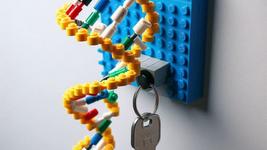Introduction to CRISPR Experiments
There is no doubt that the implementation of CRISPR/Cas platforms – particularly CRISPR/Cas9 – has revolutionized genetic engineering, particularly for therapeutic applications.
However, we will leave aside for a bit the promises of CRISPR/Cas applications and focus rather on what it practically entails “To Do CRISPR” on cells. At the end of the day, it all starts from here!
Therefore, in the coming series of posts, we would like to go together through the steps underlying a CRISPR experiment – and we will see that even the most basic one implies quite a bit of planning – and also open a discussion for questions, suggestions, and your best tips and tricks “to CRISPR”.
For the first post of today, to make sure we are all on the same page let’s define what basic CRISPR/Cas9 does in a few words: it cuts the DNA.
That’s it.
This can be a “hard-to-swallow-pill” but as a matter of fact, the first iteration of CRISPR/Cas9 works basically as a scissor that cuts the DNA introducing a so-called DNA-Double-Stranded Break (DSB).
At this point, you may already have a lot of questions all in the form of “What is then all about?”
What may seem trivial or just simple, it is indeed the big deal of CRISPR/Cas9: its ease of use.
With CRISPR/Cas9 it is indeed possible to define the desired region to introduce a DSB with an ease like never before. Previous technologies like Zinc-Finger-Nucleases (ZFNs) and Transcription Activator Like Effector Nucleases (TALENs) could do something similar, but the process is much more tedious and time-consuming!
Okay, so we have a molecular scissor that can cut the DNA. How does this translate into genetic engineering?
This is more than a fair question whose answer lies not in CRISPR/Cas9 per se but in the consequences of the DSB introduced by it.
See, cells do not like having their DNA cut to pieces. It is not nice, but most of all it is quite dangerous. Particularly, DSBs are the most dangerous lesions a cell can experience. This is the reason why cells have evolved along the centuries mechanisms to repair DNA damages pronto.
In human cells – which are the target of our CRISPR/Cas9 experiments – we have two main modalities of repair of DSB i) the Non-Homologous-End Joining (NHEJ) and ii) the Homology-Directed-Repair (HDR).
These two mechanisms – along with their subtypes and alike – keep the genome safe from detrimental lesions like DSB.
In the next posts, we will explore together how by leveraging the endogenous DNA repair mechanisms of the cells – like NHEJ and HDR – we can for example i) abrogate the expression of a gene (aka Knock-Out, KO) ii) introduce new information within the genome (Knock-In) and much more!
Stay tuned, leave comments, and suggestions, and share with your network!
To get more CRISPR Medicine News delivered to your inbox, sign up to the free weekly CMN Newsletter here.
Tags
CLINICAL TRIALS
Sponsors:
Suzhou Maximum Bio-tech Co., Ltd.
Sponsors:
Zhejiang University







